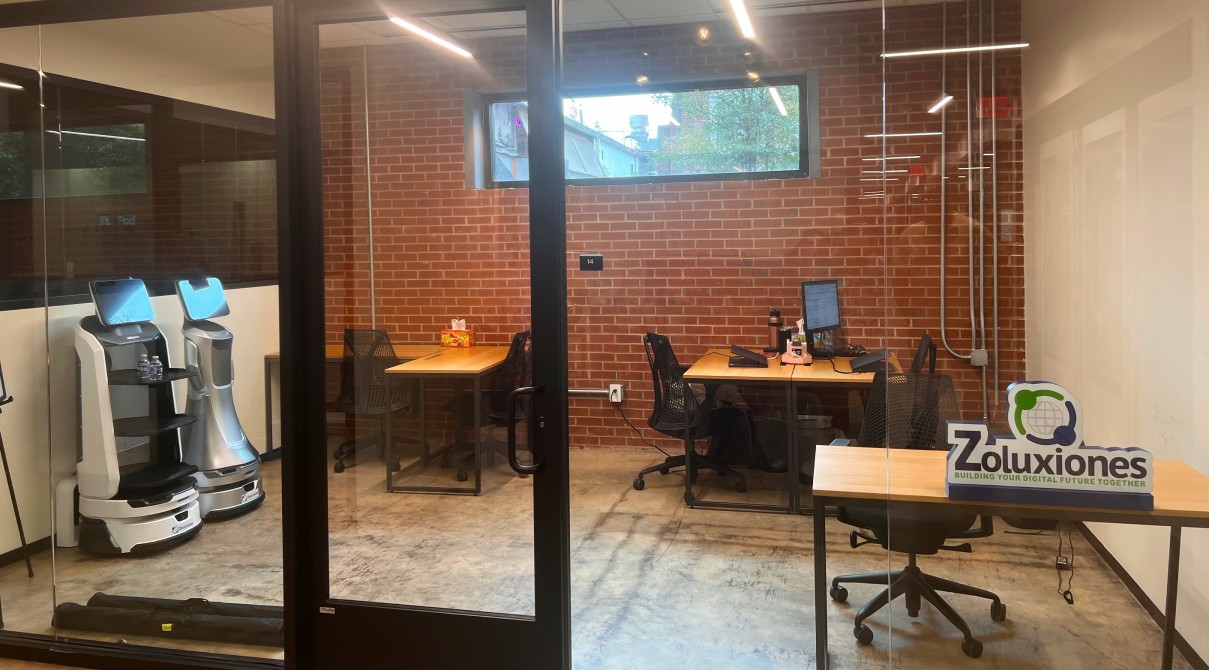This website uses cookies so that we can provide you with the best user experience possible. Cookie information is stored in your browser and performs functions such as recognising you when you return to our website and helping our team to understand which sections of the website you find most interesting and useful.

calendar_month 1 Aug 2023
bookmark Articles
Creating Exceptional Customer Experiences: The Rise of Digital Experience Platforms (DXP)
Today, customers anticipate relevant, significant, and consistent experiences every time they interact with a brand. If a purchaser buys a product through an Instagram advertisement, they do not desire to receive an email days later promoting the same item. Instead, they seek intelligent communication, tailored content, efficiency, and a dependable and unified brand encounter.
However, providing such an exceptional experience is challenging. Marketing technologies address different aspects of the omnichannel puzzle, but integrating these solutions into a cohesive, data-driven marketing technology stack (martech) often presents difficulties. This is precisely why industries and users of various backgrounds are embracing the next generation of marketing technology: the digital experience platform (DXP).
A DXP equips organizations with tools to gather comprehensive, cross-channel data, enabling them to understand their customers and apply these insights to content creation, management, and delivery. Whether a customer engages with a brand through a website, app, chatbot, social platform, customer portal, in-store kiosk, digital billboard, or wearable tech, a DXP unifies these digital touchpoints into a more streamlined and informed ecosystem that marketers can oversee.
To accomplish this, DXPs consolidate a wide range of functionalities within a single system. They harness the capabilities of various popular technologies, such as e-commerce, campaign management, digital asset management (DAM), customer relationship management (CRM), customer data platforms (CDP), and personalization tools. While certain vendors offer more extensive capabilities than others, and not all mentioned products are always necessary, in general, all DXPs must:
- Provide content management and media storage capabilities
- Facilitate rapid development of websites, portals, landing pages, or apps
- Aggregate and connect customer data across touchpoints and content using APIs
- Leverage data to enable the personalization of digital content for customers
- Measure content performance and user experience through analytics
How does a DXP differ from a CMS?
Although a DXP can offer content management system (CMS) capabilities, they are not identical solutions. A traditional CMS primarily focuses on content management for websites, such as blogs, e-commerce sites, company intranets, and landing pages. However, many organizations today require connectivity with customers across various digital channels, extending beyond their web properties.
This is where the DXP comes in. A DXP takes CMS functionality to the next level by addressing the entire user experience across all digital channels, not just a brand’s website. Often referred to as “the next evolution of the CMS,” DXPs are increasingly recognized as an appealing and comprehensive alternative to traditional CMS solutions.
Types of DXPs
An open DXP is a solution that integrates multiple products from different third-party vendors into a centralized system. It offers organizations the flexibility to integrate their preferred products, such as their beloved CRM or a new technology that perfectly meets their needs.
Many open DXP vendors also provide pre-built integrations with vetted third-party products that customers can easily enable within the system.
On the other hand, a closed DXP is a self-contained platform that incorporates all DXP components or products within the system itself. Instead of relying on existing third-party tools, a closed DXP develops and maintains its own components, which are sold as a suite. However, a closed DXP can still integrate with external products, although it works best within its own product ecosystem.
The choice between an open and closed DXP depends on personal preference. However, most buyers tend to prefer the open model. A closed DXP can be suitable for organizations lacking technical resources for integrations or for those who prefer working exclusively with a single vendor.
The four components of a digital experience
- Content: Engaging with your audience. Content acts as the “what” in conveying the actual message, regardless of its format (e.g., articles, social posts, digital ads, e-books). It must be created and delivered effectively. Content holds the key to every experience, and organizations should have the ability to generate significant amounts of content rapidly, efficiently, and at scale. A true DXP offers a centralized source of truth for content across the entire organization. All stakeholders, including developers, IT, and marketing teams, should be able to create and update content swiftly, even without advanced technical skills. This content needs to be discoverable, shareable, and reusable across various touchpoints (web, mobile, email) and modalities (screen, voice, gestures), allowing for content creation once and publication across multiple channels.
- Data: Understanding your customers. Data provides answers to crucial questions: who your customers are, where they interact, and how they prefer to engage. It forms the basis of customer understanding, guiding the selection of appropriate content to engage with them. A true DXP establishes a single source of truth for data through real-time 360° customer profiles. It should enable open access to data, making it available to all teams within the organization through pre-built connectors that integrate with new, legacy, and offline channels. Such accessibility empowers any team that requires access to view and report on the data without creating bottlenecks. A true DXP should also automatically integrate profiles and segments across channels, devices, and systems, while deduplicating and cleansing data to provide a unified view of customer interactions across online and offline channels.
- Machine learning: Scaling true intent. Machine learning (ML) is a means to an end: identifying and delivering genuine customer insights at scale. ML models can combine customer data and activities, enhancing operational efficiency. These algorithms help identify customer preferences, segment them appropriately, and, most importantly, predict their next actions based on behavior. ML provides true intent by understanding which customers tend to make online purchases, who the most valuable customers are, and predictive models that identify the most engaging channels and times of day. By applying machine learning to data, the third component of a digital experience platform, insight at scale, is achieved. As business needs expand to new regions, channels, and systems, all of which collect new customer data, machine learning enhances the data and determines more effectively which content should be delivered to each customer.
- Orchestration: Connecting the pieces. The fourth element, orchestration, encompasses customer journeys, journey mapping, automation, and related processes. Once you possess customer data and have created content, and you’ve utilized machine learning to gain forward-looking customer insights, the next step is orchestrating a cohesive customer journey. Each touchpoint should be optimized to maximize its impact without causing disruption. A DXP empowers teams to personalize experiences and create customer journeys without requiring coding skills. It should also enable easy duplication of successful campaigns and localization to drive engagement across distributed organizations. Together with content, data, and machine learning, orchestration sets engagement in motion, delivering the right message to cater to every aspect of the digital experience: websites, applications, channels, modalities—whatever channels customers towards their preferred solutions. It guides businesses on what to deliver next and instills confidence that they are taking the best possible action. Investing in the right DXP, along with organizational commitment and a proper process, leads to the ultimate goal: a self-guided customer journey.
When to utilize a DXP
Determining the appropriate time to implement a DXP can be challenging amidst the multitude of vendors promoting their solutions. The timing varies for each organization, taking into account available resources, but several objectives signal the need for a DXP:
Developing comprehensive strategies:
While not every digital strategy necessitates a DXP, organizations with long-term omnichannel marketing goals should consider adopting one sooner rather than later. As strategies become more ambitious, it becomes increasingly difficult to assess effectiveness. A DXP addresses this challenge by connecting customer data and content across all digital touchpoints, eliminating traditional data silos. Marketers can then execute comprehensive strategies with enhanced speed, agility, and confidence.
Creating personalized user experiences:
Achieving personalized experiences at scale requires the assistance of technology. However, many existing technologies only address a portion of the user experience, failing to integrate insights about the customer throughout the entire brand journey. A DXP resolves this issue by unifying all data and digital experience tools into a single, comprehensive platform. This enables organizations to gain deeper customer understanding and deploy smarter, more effective personalization tactics.
Impactful campaign management:
Campaigns pose challenges as they demand quick insights and rapid actions. A DXP facilitates this process by consolidating data from multiple sources for prompt analysis. Additionally, campaigns require ongoing optimization and A/B testing, often leading marketers to rely on developers to create or update landing pages. A DXP equips marketers with the necessary tools to independently make these updates and implement changes in real-time.
Benefits of a DXP:
Integrated data and content approach:
By adopting a DXP, organizations gain a cohesive approach to data and content, leading to smarter budget allocation, informed campaign optimization, and faster decision-making processes.
- Enhanced personalization: DXPs leverage machine learning and cross-channel insights to enable smarter personalization. This encompasses understanding customer characteristics, preferences, content consumption patterns, and more, resulting in tailored experiences.
- Open architecture for customization: DXPs offer an open architecture solution that allows for easy integration of both existing and new cutting-edge marketing tools. This flexibility enables customization and the incorporation of innovative technologies.
- Streamlined content creation: DXPs provide turnkey content creation methods, reducing reliance on web developers and promoting agile digital marketing practices.
- 360° customer view: A DXP offers a comprehensive view of the customer, allowing organizations to effectively manage, cleanse, and operationalize online and offline data.
- Governance controls: DXPs include governance controls that uphold brand consistency, protect customer privacy, and mitigate risks associated with content management and data handling.
Latest Post
-

3 Jun 2025
Implementing AI solutions: Best practices for 2025
-

12 Dec 2024
Zoluxiones Shines at the Latin American Chamber of Commerce Charlotte’s “Golden Era” Gala
-

6 Nov 2024
Zoluxiones Expands Its Horizons: We’ve Opened Our New Office in Charlotte!
-

4 Oct 2024
From Peru to Charlotte: Zoluxiones sets sights on International Growth and Innovation
-

9 Feb 2024
The AI revolution in Customer Service and sales optimization

